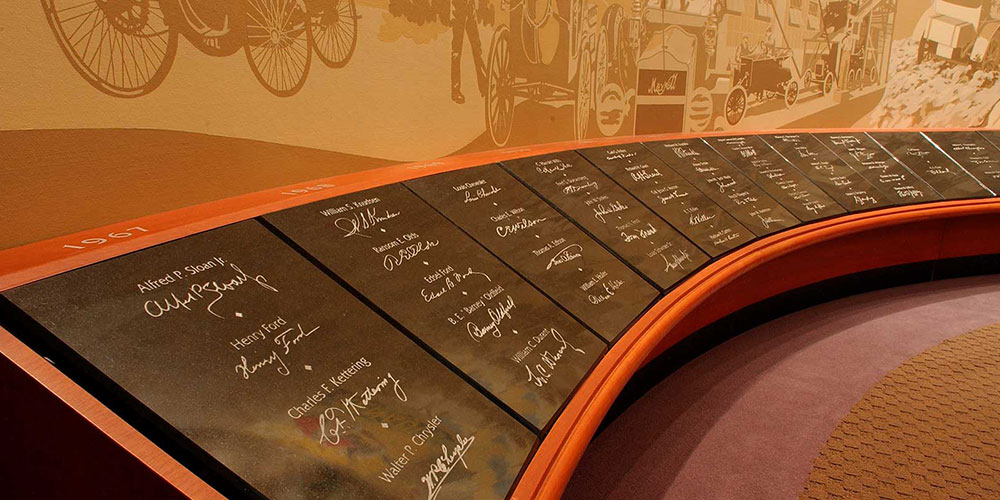by A. Wayne Ferens
Images from the Ferens Collection
Published 6.26.2024
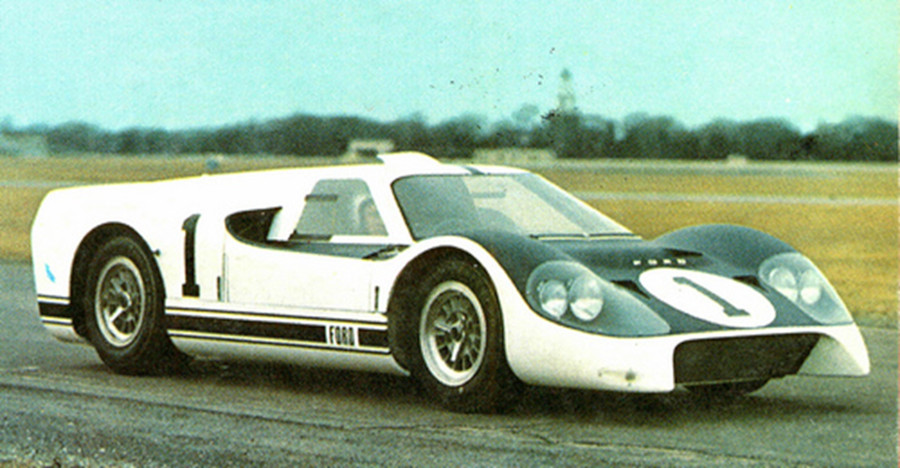 Ford Chassis J-1 completed and ready for shakedown at the Dearborn Proving Grounds in March, 1966. (Ferens Collection)
Ford Chassis J-1 completed and ready for shakedown at the Dearborn Proving Grounds in March, 1966. (Ferens Collection)
As the need for more speed is always the primary objective for race car designers and builders, Ford took it to the next level when building their all-new GT Mark IV racing sports prototype to compete in the 36th Grand Prix of Endurance in 1967. The story of this new car began in June, just days after the Ford GT-40 competed at the 1965 Le Mans 24-hour endurance race, when Roy Lunn of Ford Advanced Vehicles decided an all-new, lighter weight, more aerodynamic, higher performance car would be needed to compete and meet the new FIA Group Six, Appendix "J" regulations.
The idea for the new car was conceived by Ford Division's Advanced Concepts Department in early September of 1965. Design work began a month later by stylists at the Corporate Projects Studio and the first completed car was given its shakedown runs at the Dearborn Proving Grounds (DPG) in March, 1966.
The new vehicle was internally designated the "J" car (later MK IV) and was built on a 95-inch wheelbase just as the Ford GT-40 (Mark I) and the Mark II that competed and won the 1966 Le Mans 24-hour race. What sets this new J-car apart from the original GT-40 and all other race cars at the time was its unique body and frame construction. The frame used a unitized construction process employing aluminum honeycomb with the entire structure including the brackets on the chassis held together with heat-cured advanced structural adhesives. The process is similar to that used in aircraft construction.
Ford and the Aviation Department in the Military Defense Division of the Brunswick Corporation together would assemble the first three prototype test vehicles (J-1 through J-3), five race-ready cars for 1967 (J-4 through J-8) and four additional chassis of which two (J-9 and J-10) were built as open cars for Can Am competition. Chassis J-11 and J-12 were never completed during this time.
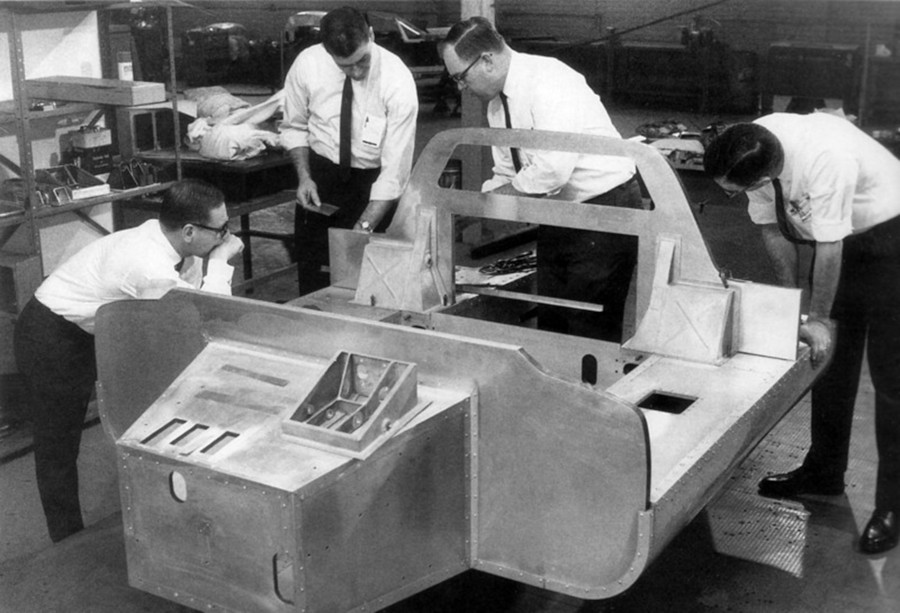 Ford engineers piecing together the first prototype J-car chassis in Dearborn, Michigan in early 1966. A total of 12 chassis were made and nine still exist. (Ferens Collection)
Ford engineers piecing together the first prototype J-car chassis in Dearborn, Michigan in early 1966. A total of 12 chassis were made and nine still exist. (Ferens Collection)
It is well-known that an aircraft airframe has been the most demanding application for aluminum alloys. The material selected for this new "multicoque" J-car frame was 1/2-inch thick aluminum honeycomb sheet core (1-inch for the bulkheads). The outer skin material selected for covering the sheet core was 2024 T6 aluminum sheet that is .016" thick. 2024 alloy was introduced by Alcoa in 1931 as an alclad sheet in the T6 temper. It is primarily used in structural areas where stiffness, fatigue performance and good strength are required.
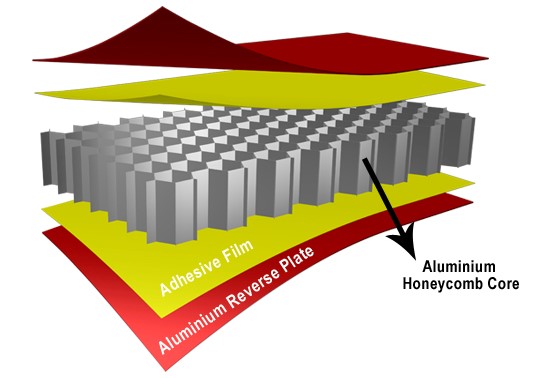 A diagram of the aluminum alloy used in the car. (Ferens Collection)
A diagram of the aluminum alloy used in the car. (Ferens Collection)
The outer sheets are formed over the aluminum honeycomb core design. During assembly, the .016" outer sheets are bonded to the honeycomb core with a special epoxy resin, then rivets are added to the areas of highest stress, then heated in a specially designed oven (autoclave) at the Brunswick facility until totally cured. When removed the total weight of the basic frame without brackets was only 85 pounds. Testing the chassis for torsional rigidity showed approximately 10,000 lb/ft per degree of load.
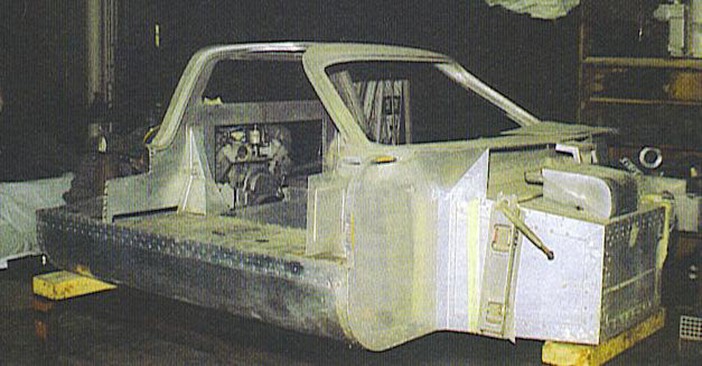 The chassis under construction in Dearborn. To improve stiffness, all of the L-section brackets were made wide enough to accomodate two rows of rivets (later 3-rows after J-4) as seen in photo. (Ferens Collection)
The chassis under construction in Dearborn. To improve stiffness, all of the L-section brackets were made wide enough to accomodate two rows of rivets (later 3-rows after J-4) as seen in photo. (Ferens Collection)
After the chassis was completed, the Engine & Foundry (E&F) race prepared 427 cu.in. engine and Ford built KK T-44 trans-axle (first three had automatic transmissions) was installed; the reinforced fiberglass body sections (front, rear and doors) would be added. These body panels were modified and changed over the many months during the J-cars development and testing of the car until the Mark IV designed body panels were added in February 1967.
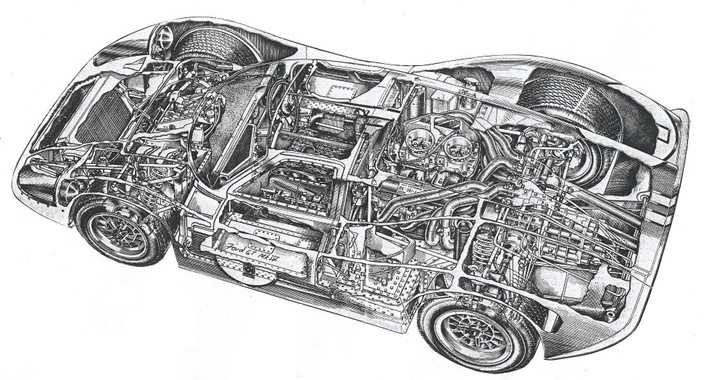 A skeleton diagram of the J-6 Chassis winner of the 1967 Le Mans 24 hour race. (Ferens Collection)
A skeleton diagram of the J-6 Chassis winner of the 1967 Le Mans 24 hour race. (Ferens Collection)
The skeleton view of Chassis J-6, the 1967 Le Mans winning car shows all major components as installed including rear mounted engine and trans-axle, F&R independent suspension, disc brakes, rack & pinion steering system, magnesium turbine wheels, front mounted light weight radiator, two interconnected fuel tanks (21 gal. each), engine and transmission cooling apparatus and tuned cross-over exhaust system. The approximate weight without fuel is 2,205 pounds, about 450 pounds less than the GT-40 Mark II.
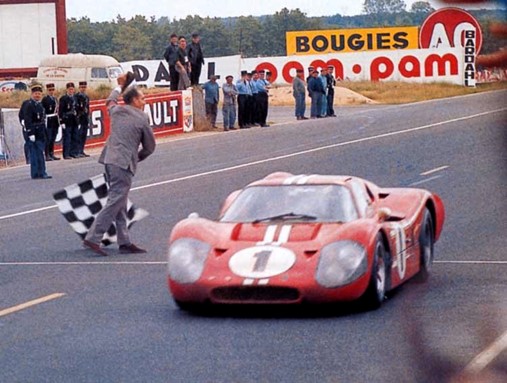 The J-6 chassis in action and winning the 1967 Le Mans 24-hour race. (Ferens Collection)
The J-6 chassis in action and winning the 1967 Le Mans 24-hour race. (Ferens Collection)
Within the first two hours of the 1967 Le Mans race, Dan Gurney with co-driver A.J. Foyt took the lead and never looked back. They led for 22 of the 24 hours and covered 3249.6 miles, averaging 135.483 mph. (Ferens Collection)
Today, the use of aluminum and other lightweight materials in race and production vehicles (light-weight steels, magnesium, titanium & carbon-fiber) is now a common engineering dictate. But it was more recently that the use of advanced structural adhesives alone or in tandem with more conventional joining technologies such as riveting and spot welding are now part of the assembly process for today's vehicles. The Ford GT Mark IV was truly ahead of its time.
Bibliography:
Hodges, David. “The Ford GT-40 Prototypes and Sports Cars.” 1970
“The Ford GT: New Vehicle Engineering and Technical History.” SAE International, 2004
Ferens, A. Wayne. “The Ford J-Car: America's Greatest Sports Prototype.” 2012


